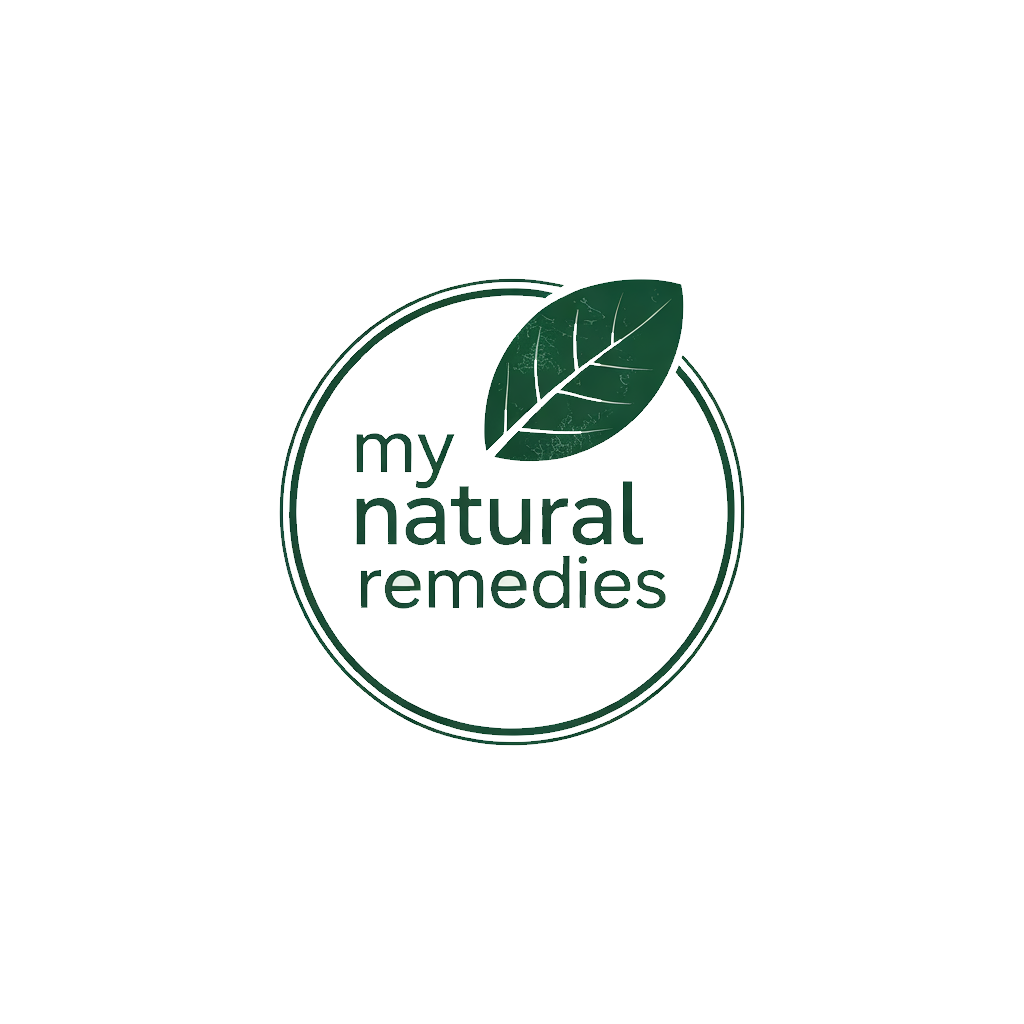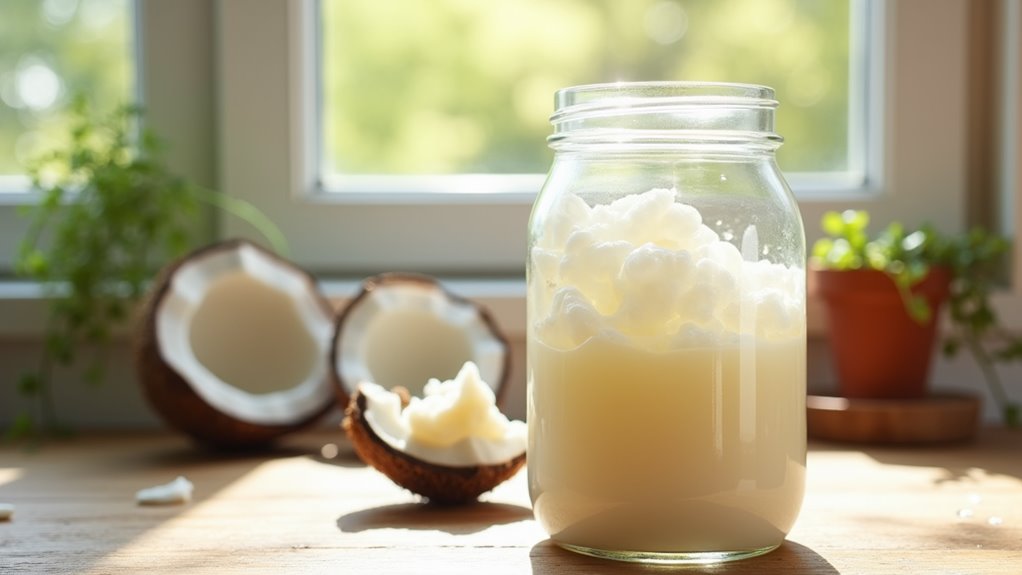Transform Your Hair- The Coconut Oil Hair Mask You Need to Try!
Transform your damaged hair with a nourishing coconut oil hair mask that deeply penetrates the hair shaft to restore strength and shine. You’ll need virgin coconut oil as your base, plus honey for moisture and beaten egg for protein. Apply the warmed mixture to damp hair in sections, leave it on for 30-60 minutes under a shower cap, then shampoo thoroughly. Discover how this simple treatment can revolutionize your hair care routine.
The Science Behind Coconut Oil’s Hair Benefits
While many natural oils can benefit your hair, coconut oil stands out due to its unique molecular structure. Its low molecular weight and straight linear chain allow it to penetrate deep into the hair shaft, unlike most other oils that simply coat the surface. This remarkable ability means you’ll get more than just temporary shine from your coconut oil hair mask.
When you apply coconut oil to your strands, it helps reduce protein loss and strengthens hair from within. It’s especially effective on damaged or chemically treated hair, as it fills the gaps in your hair’s protein structure.
The oil’s lauric acid content also has antimicrobial properties that can help maintain a healthy scalp environment.
You’ll notice that coconut oil’s melting point is close to body temperature, making it easy to work with and ensuring optimal absorption when you’re doing your hair mask treatment.
Essential Ingredients for Your Hair Mask
Now that you understand how coconut oil works its magic, let’s build your perfect hair mask recipe.
You’ll need virgin coconut oil as your base ingredient – it’s the purest form and delivers the best results.
For dry, damaged hair, add one tablespoon of honey, which acts as a natural humectant to lock in moisture.
If you’re dealing with scalp issues, tea tree oil (4-5 drops) helps combat dandruff and itchiness.
To boost growth and strength, incorporate one beaten egg for protein or two tablespoons of aloe vera gel for scalp health.
For extra shine and nourishment, add either one mashed avocado or two tablespoons of plain yogurt.
If you’re battling frizz, a few drops of argan oil will help tame those flyaways.
These powerhouse ingredients work together to create a customized treatment that’ll transform your hair from lackluster to luminous.
Step-by-Step Hair Mask Application Guide
Applying your coconut oil hair mask correctly makes all the difference in achieving optimal results. Like many of us who want healthier, shinier hair, you’ll want to follow these simple steps to get the most from your treatment. The process is straightforward and will quickly become part of your self-care routine.
-
Part your dry hair into 4-6 sections and warm the coconut oil mixture between your palms for easier application.
-
Start from the roots and work your way down to the ends, massaging the mask thoroughly into each section.
-
Twist your hair into a loose bun and cover with a shower cap or warm towel to lock in the heat.
-
Leave the mask on for 30-60 minutes, depending on your hair’s needs.
-
Shampoo twice with lukewarm water to remove all traces of oil, then condition as usual.
Now you’re ready to join the community of coconut oil enthusiasts who’ve discovered this transformative hair treatment.
Tips for Maximum Hair Mask Results
To get the most out of your coconut oil hair mask, you’ll need to consider several key factors that influence its effectiveness. First, always apply the mask to slightly damp hair, as this helps the oil penetrate deeper into your strands.
Choose a time when you can leave the mask on for at least 30 minutes – overnight treatment works even better.
Don’t skimp on covering your hair completely, paying special attention to damaged ends and your scalp. Keep your treated hair wrapped in a warm towel or shower cap to maintain heat, which enhances absorption.
If you’re treating particularly dry or damaged hair, add a few drops of vitamin E oil to boost the mask’s nourishing properties. Incorporating medium-chain triglycerides (MCTs) can further enhance the mask’s effectiveness by providing deep nourishment to your hair.
Remember to shampoo thoroughly afterward, as residual oil can make your hair appear greasy.
Stick to a regular schedule – applying the mask once or twice a week will give you the best results for healthy, glossy locks.
How Often to Use Your Coconut Oil Hair Mask
The frequency of your coconut oil hair mask treatments depends largely on your hair type and condition. If you’re new to hair masks, start with once a week and adjust based on how your hair responds. You’ll know you’ve found the right frequency when your hair feels consistently moisturized without becoming greasy.
Here’s a quick guide to help you determine your ideal treatment schedule:
-
Dry, damaged hair: Apply mask twice weekly until hair health improves
-
Normal to oily hair: Use once per week to maintain healthy locks
-
Chemically treated hair: Treatment twice weekly to restore moisture
-
Fine hair: Apply once every two weeks to avoid weighing hair down
-
Thick, coarse hair: Can benefit from up to three treatments weekly
Remember to pay attention to your hair’s response and adjust accordingly. You’ll soon discover your perfect treatment rhythm that keeps your hair looking its best.
Common Mistakes to Avoid When Using Coconut Oil
While establishing the right treatment schedule is important, knowing what not to do can make or break your coconut oil hair mask results.
Don’t apply coconut oil to dirty hair – always start with clean, damp strands to maximize absorption. You’ll want to avoid using too much oil, as this can leave your hair looking greasy and weighed down.
Another common mistake isn’t heating the oil properly. Cold coconut oil won’t penetrate your hair shaft effectively, but overheated oil can damage your scalp. Remember to test the temperature on your wrist first.
Don’t rush the process – leaving the mask on for just a few minutes won’t give you the best results. Also, many people make the mistake of not thoroughly washing out the oil, which can lead to product buildup.
Finally, don’t skip the roots if you have a dry scalp, but avoid them if your scalp tends to be oily.
Frequently Asked Questions
Can I Use Coconut Oil Hair Masks if I Have an Oily Scalp?
You’ll want to avoid applying coconut oil directly to your oily scalp. Instead, focus the mask on your mid-lengths and ends, where your hair needs more moisture and nourishment.
Will Coconut Oil Stain My Clothes or Pillowcase During Treatment?
Yes, coconut oil can stain your fabrics, but you’ll avoid this by wearing an old t-shirt and using an old pillowcase. If you’re worried, wrap your hair in a shower cap.
Is Refined or Unrefined Coconut Oil Better for Hair Masks?
You’ll want to use unrefined coconut oil for your hair mask, as it retains more natural nutrients and beneficial compounds compared to refined oil’s processed state. It’s what most beauty experts recommend.
Can I Add Essential Oils to My Coconut Oil Hair Mask?
You can absolutely add essential oils to your coconut oil hair mask! Try lavender for soothing, rosemary for growth, or tea tree for scalp health. Just use 2-3 drops per tablespoon.
Does Coconut Oil Hair Mask Work Differently on Color-Treated Hair?
You can safely use coconut oil masks on color-treated hair, but you’ll want to apply it less frequently. It helps seal color while nourishing strands, just like it does for natural hair.





